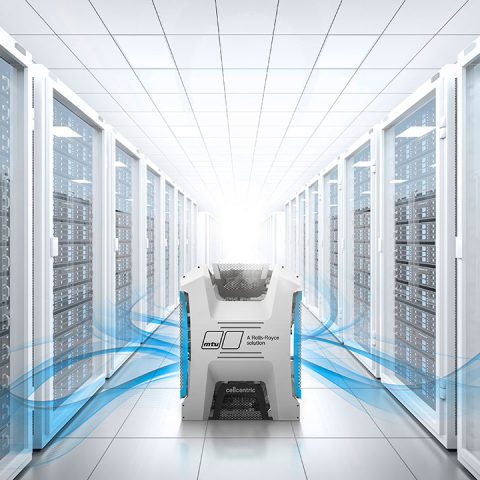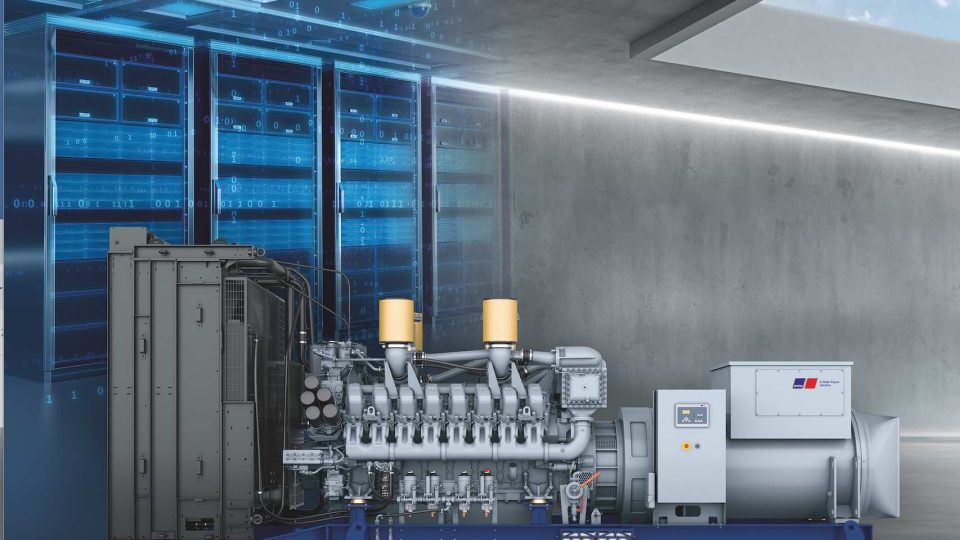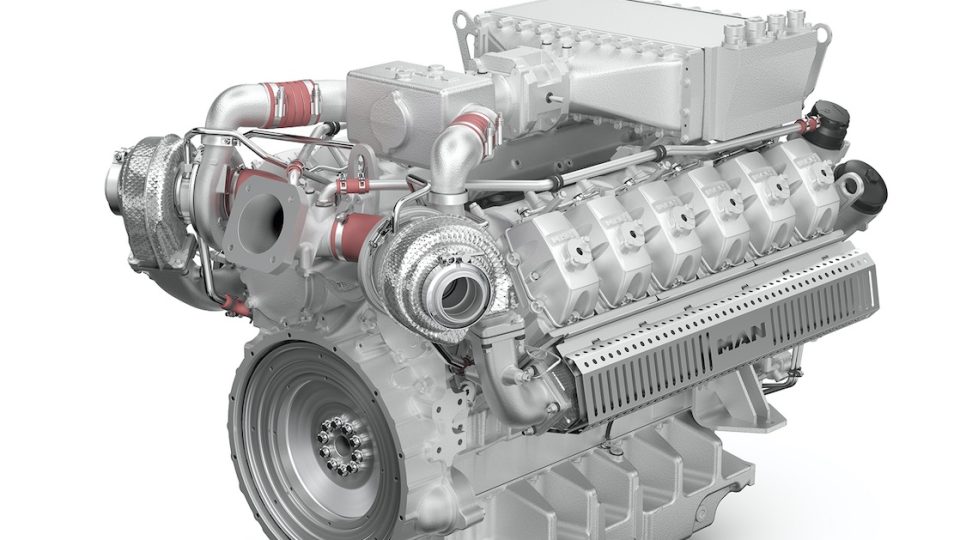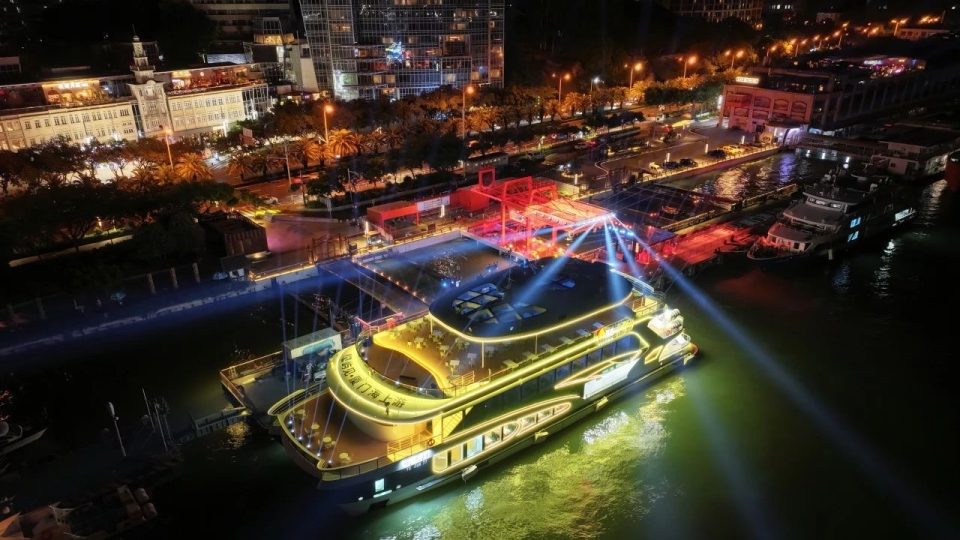Rolls-Royce Power Systems: helping data centers towards net-zero
Experts from Rolls-Royce Power Systems provide an outlook on climate-neutral data centers.

The data center market is booming worldwide. According to the results of a study by the Borderstep Institute, the energy consumption of data centers in the EU alone was 76.8 TWh in 2018. The estimates show a 28% increase to 98.52 TWh by 2030. On the way to climate neutrality, this electricity must also be generated green. What role do diesel generators play in this? And the fuel cell? Energy experts Tobias Bertler (Senior Manager Direct Sales & Business Development APAC), Ryan Murphy (Sales Lead for Data Center Solutions in North America) and Dario Schilling (Senior Manager Direct Sales for Mission Critical Backup Solutions) from Rolls-Royce Power Systems provide an outlook.
How concerned about sustainability are data center operators when it comes to back up power?
Tobias Bertler: Data center operators are very interested in sustainable backup power solutions. This is partly because the entire data center market is dominated by the large technology companies, which are very much in the public eye and feel a social responsibility to reduce their carbon footprint. This has also moved data center emergency power systems into the fore. Although they have only a few operating hours, gigantic capacities with a very high available power are being built for these mission-critical data centers.
Is there still a big demand for diesel gensets from data center operators?
Tobias Bertler: Definitely. Today every mission-critical data center has backup power systems built into it that typically run on diesel fuel. Rolls-Royce Power Systems delivered over the course of the years approximately a total capacity of 5 GWe emergency power units into the global data center business. The exceptional situation caused by the COVID-19 pandemic in recent years showed once again how important it is to ensure an uninterrupted power supply for sensitive and critical infrastructures such as global continuous Internet traffic. This was also demonstrated in our diesel emergency power systems business. We have also further expanded our range of power supply systems for mission-critical applications with the acquisition of Kinolt as a leading company for dynamic UPS systems. Diesel gensets currently offer the highest safety and most coherent technical characteristics for mission-critical energy systems.
How do you reduce emissions from your diesel generators?
Tobias Bertler: We have different ways of reducing emissions from diesel gensets: we continue to work on reducing exhaust emissions through internal engine measures and we offer exhaust gas aftertreatment systems. We provide different, flexible and project-specific solutions for the very heterogeneous market, where there are different directives and legislation depending on the region.
What can you say about the North American data center market?
Ryan Murphy: The North American data center market continues to grow exponentially, over 35% CAGR, and is expected to exceed $90 billion USD by 2027. This growth is led by the dominance of hyperscale data center customers through both their own construction and record lease deals with colocation providers. There has been a lot of consolidation in the market as the players seem to get larger and more sophisticated. These customers are not only demanding higher quality and reliability in their products, but also greener solutions moving forward such as HVO fuel, exhaust aftertreatment, battery energy storage, and hydrogen.
How is the European data center market developing in terms of economic growth and sustainability?
Dario Schilling: Our European markets continue to see a dynamic development in terms of double digit percentage growth and demand for new sustainable power solutions. The movement of increased digitalization in our life and the amplified demand for data in connection with the latest 5G technology, will continue to shape the overall requirements for new Data Center capacities. Further governmental regulations and consideration for more sustainable power supply continue to influence the technology development in the short term of our robust diesel backup power solution and for a long term shift to other possible solutions as our gas generators, hydrogen fuel cells and smart small scale energy networks. The key challenge for us is to satisfy both requirements for fast deployment of future Data Center capacity and as well working on the technology shift towards more sustainable solutions.
What alternatives for backup power supply for data centers do you see on the way to climate neutrality?
Tobias Bertler: We see it as important to expand renewable energies and Power-to-X technologies, make alternative fuels available, prepare combustion engines for alternative fuels, and develop alternative energy and propulsion systems. We see great potential in hydrogen as a fuel. The numerous initiatives by various countries to further expand the infrastructure are also encouraging.
Which sustainable solutions will Rolls-Royce Power Systems bring to market?
Ryan Murphy: Rolls-Royce Power Systems is taking concrete steps towards climate-neutral solutions with its own sustainability program “Net Zero at Power Systems”. With this, Rolls-Royce’s Power Systems business unit has set itself the target of saving 35 per cent of greenhouse gas emissions by 2030 compared to 2019 using new technologies. This near-term target plays an important role in the Rolls-Royce Group’s ambition to achieve carbon neutrality by 2050 at the latest. In addition to new technologies, a key element in achieving these targets is the release of key mtu combustion engine products to run on sustainable EN 15940 fuels such as e-diesel and second-generation biofuels as early as 2023.We are further developing our mtu gas engine portfolio for power generation and cogeneration to run on hydrogen as a fuel and thus enable a climate-neutral energy supply. Already today, gensets powered by mtu Series 500 and Series 4000 gas engines can be operated with a gas blending of 10 percent hydrogen. Still in the course of 2022 operation with a hydrogen content of 25 percent will be possible. After intensive tests on test benches and pilot installations at customers in 2022, Rolls-Royce will continuously market new mtu Series 500 and Series 4000 gas engines beginning in 2023 for use with up to 100 percent hydrogen, and on a design to order basis conversion kits to allow already installed gas engines in the field to run on 100% hydrogen. Rolls-Royce is to develop complete mtu hydrogen fuel cell solutions based on cellcentric’s fuel cell modules that emit nothing other than water vapour. This will enable CO2-free, climate-neutral generation of emergency power for data centers and many other mission critical applications. We commissioned a fuel cell demonstrator in 2021 and plan to bring a further demonstrator plant in the megawatt range operative online in 2022. The first pilot plants with customers will be installed in 2023, with Rolls-Royce launching standard production fuel cell systems in 2025.
In what ways can fuel cells be used for data centers?
Ryan Murphy: Strong arguments for using and promoting the fuel cell technology for data center are high reliability, scalability and the ability to reduce both pollutant and climate-damaging gas emissions to zero. With their modular design, fuel cell systems are easily adaptable to match output with demand, and their low maintenance requirements and low running costs also make them attractive. The greatest plus point arises when the fuel used is regeneratively produced hydrogen because it allows both pollutant and climate-damaging gas emissions to be reduced to zero. Fuel cell systems can also be easily integrated at a later date and grow with it when a data center expands. This makes fuel cell systems a long-term and future-proof investment. Fuel cells can play a central role for CO2-free data centers (see graphic). In the future, the basic power requirements of a data center could be covered by solar and wind power plants instead of from the public power grid, as has been the case to date. If sufficient “green” electricity is available, hydrogen can be produced from water by electrolysis and stored on site. In addition, the hydrogen demand can be covered by a supply network that will be available in the future and used to operate the fuel cell: It would immediately take over the supply of the data center to maintain the infrastructure in the event of a power failure.
Is the use of synthetic fuels approved in accordance with EN 15940 for driving mtu generators?
Tobias Bertler: For the synthetic fuels according to EN 15940, we have run extensive tests on the test bench and also in the field in recent years and released GtL and HVO already for our Series 4000 G03/04 powergen engines. The synthetic EN 15940 fuels GtL (Gas-to-Liquid) and HVO (Hydrotreated Vegetable Oil), which are produced using the Fischer-Tropsch process are very similar to diesel in terms of their properties. They also offer some advantages, such as storage stability, which is much better compared to conventional diesel (especially with increased bio content). HVO is largely made from biological feedstocks and can be produced in a CO2-neutral manner.
What about biodiesel – is it a viable fuel given the sporadic use of gensets that are only used at back-up power?
Tobias Bertler: Biodiesel has a higher bio and water content and thus has a poorer storage capability than regular diesel. Biodiesel is more susceptible to aging due to microorganisms in the fuel and can even tip over. This is referred to as the “diesel plague”, where a bio-sludge forms in the fuel that can cause equipment malfunction and damage. Since fuel is often stored for long periods in emergency power systems, we view this fuel rather critically for this area. We consider other alternative fuels, such as the synthetic EN 15940 and e-fuels, to be more suitable for this purpose. Nevertheless, we have approved an admixture of 7 % biodiesel, as is common today in fuels according to EN590, without any further measures. For blending up to 20% biodiesel, we recommend various accompanying measures such as additives, a tank maintenance system or engine flushing.
Is it possible to connect emergency generators in data centers to the grid for control reserve and thus support the expansion of renewable energies?
Ryan Murphy: Absolutely! Emergency gensets offer excellent conditions for feeding control reserve into the power grid and thus compensating for fluctuations in the grid (frequency and voltage) caused by the increased integration of renewable energies. The gensets can thus play a significant role in supporting the energy transition (and integration of renewables). To this end, there are various capacity markets in different countries in which to participate and create another source of income. For many years, Rolls-Royce Power Systems has had cooperative agreements with various national and international companies that enable our gensets to be integrated into the respective capacity markets.







